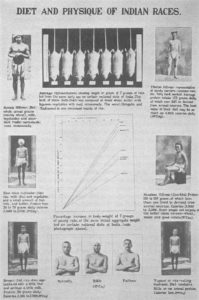
 The risk reduction template that is Paleo is extremely simple. We are best adapted to the consumption of meat and not yet, or less adapted, to the consumption of new foods. The closer we are to our adapted state, the less risky our nutrition will be. The newer the food, the more caution it deserves. By the way, domesticated plants are relatively new food compared to meat.
The risk reduction template that is Paleo is extremely simple. We are best adapted to the consumption of meat and not yet, or less adapted, to the consumption of new foods. The closer we are to our adapted state, the less risky our nutrition will be. The newer the food, the more caution it deserves. By the way, domesticated plants are relatively new food compared to meat.
I encountered Paleo a few years before I adopted it although I accepted the premise in seconds after encountering it. So why haven’t I adopted the Paleo templet as soon as I had learned about it?
For me at least, and I think for most other people, the reason was that we do not appreciate the true extent of the risk to our health, and indeed lives, from following the wrong diet.
Enters Robert McCarrison. Reading his work convinced me that nutrition is by far the primary cause of most diseases. I started following Paleo there and then. In his words “To one whose work has lain in India, and who for more than twenty years has been engaged in a study of the relation of faulty food to disease, the belief that such food is of paramount importance in the causation of disease amounts to certainty.”
McCarrison was a young medical doctor when he was stationed by the British administration in what is today northern Pakistan, at the beginning of the 20’s century. He had a neck for research and noticed soon after his arrival that the Hunza tribe are incredibly healthy in comparison to other populations in his region. He attributed the health to their diet and thus began a long career in nutritional research.
After WWI the British realized that they did not know what to feed their Indian soldiers, so they established a nutritional research center in Madras headed by McCarrison. The results of his 18 years of research are summarized in two Cantor lectures that McCarrison presented in England in 1936 after he was promoted to major-general and received a Sir title from King George V for his scientific achievements.
The Studies
To establish the best and worse diets of India McCarrison took seven groups of 20 baby rats and fed each one a representative diet of one of the 7 of peoples of India that were known to be either very healthy like the Sikhs or of poor health and statures like the Bengalis and the Madrassis. The results are shown in the picture above (larger version here). In short, the growth rate of the rats that were fed the Sikhs diet was the highest and that of the Bengalis and the Madrassis the lowest, corresponding to these peoples’ stature.
Since then, all his stock rats (about a thousand) were kept on the Sikhs diet. All rats were kept in roomy cages and exposed for one hour a day to the sun. Not a single stock rat was ever diagnosed with a disease during the five years before McCarrison leaving for England.
He then started a set of experiments “on several thousand deficiently-fed rats, which developed a wide variety of ailments”. Among the deficiently-fad rats were those that were fed the Madrassis’ diet. McCarrison provides a detailed list of the ailments. Here it is:
Skin diseases: loss of hair, gangrene of the feet and tail, dermatitis, ulcers, abscesses, oedema.
Diseases of the eye: conjunctivitis, corneal, ulceration, xerophthalmia, panophthalmitis, cataract.
Diseases of the ear: otitis media, pus in the middle ear.
Diseases of the nose: rhinitis, sinusitis.
Diseases of the lungs and respiratory passages: adenoids, pneumonia, broncho-pneumonia, bronchiectasis, pleurisy, pyothorax, haemothorax.
Diseases of the alimentary tract: dental disease, dilatation of the stomach, gastric ulcer, epithelial new growths in the stomach (two cases of cancer), duodenal ulcer, duodenitis, enteritis, colitis, stasis, intussusception and a condition of the lower bowel suggestive of a pre-cancerous state.
Diseases of the urinary tract: pyonephrosis, hydronephrosis, pyelitis, renal calculus, nephritis, urethral calculus, dilated ureters, vesical calculus, cystitis, incrusted cystitis.
Diseases of the reproductive system: endometritis, ovaritis, death of the foetus in utero, premature birth, uterine haemorrhage, testicular disease.
Diseases of the blood: anaemia, a pernicious type of anaemia, Bartonella muris anaemia.
Diseases of the lymph and other glands: cysts, abscesses, enlarged glands.
Disease of the endocrine glands: goitre, lymph-adenoid goitre, adrenal hypertrophy, atrophy of the thymus, haemorrhagic pancreatitis (very occasionally).
Diseases of the heart: cardiac atrophy, cardiac hypertrophy, myocarditis, pericarditis, hydropericardium.
Diseases of the nervous system: polyneuritis, beri-beri, degenerative.
Another experiment worth mentioning is the one testing the diet of “the poorer classes in England”. Here is a partial quote of the results: “they were nervous and apt to bite the attendants; they lived unhappily together and by the sixtieth day of the experiment they began to kill and eat the weaker ones amongst them. When they had disposed of three in this way I was compelled to segregate the remainder…”. This description suggests that not only defined ailments are affected by poor diets but also the mood in general as well as a tendency towards violence.
In addition to reporting these experiments, McCarrison details data that ties the rate of morbidity of the various nations to the rats that represented them. It is entirely convincing, but for me it was unnecessary. I purposely do not list the actual diets so as not to distract from the crucial conclusion from McCarrison’s experiments: Health and diseases as well as early mortality in an animal are to a large extent a result of its diet.
And what have we the world done with this information? went ahead and developed specific chemicals that attempt to ameliorate each of the above mentioned diseases instead of concentrating on the core reason for all these diseases – nutrition.
By the way if you examine the difference between the worst and best diet it becomes obvious that even in rats, complete proteins and animal fats are critical to health.
Now go do Paleo, carnivorous style, what are you waiting for?
Miki Ben-Dor






 I am a Ph.D. in archaeology, affiliated with the department of Archaeology of Tel Aviv University. I research the connection between human evolution and nutrition throughout human prehistory.
I am a Ph.D. in archaeology, affiliated with the department of Archaeology of Tel Aviv University. I research the connection between human evolution and nutrition throughout human prehistory.
